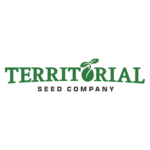When it comes to successful gardening, the journey begins with the soil preparation and carries through to the rewarding harvest. Whether you’re a seasoned green thumb or just starting out, these steps will help you achieve a bountiful and thriving garden.

Soil Preparation
Your garden’s foundation is its soil. To ensure your plants thrive, follow these soil preparation tips:
- Quality Soil: Plants prefer deeply worked, composted, and well-drained soil with a slightly acidic pH.
- Amendments: Dig or till in soil amendments and rake to create a smooth, level seed bed.
- Soil Testing: Test your soil yearly and amend it as needed.

Direct Sowing
For those who prefer to sow seeds directly in the garden, follow these guidelines:
- Fertilizing: If you’re fertilizing at the time of planting, ensure the fertilizer is placed deeper than the seed will be planted.
- Planting: Dig a shallow furrow to mark the row and plant your seed to the appropriate depth (specific measurements can be found for each vegetable).
- Covering Seeds: Cover the seed with soil, vermiculite, or sifted compost.
- Watering: Water in and keep the soil evenly moist during germination, avoiding soggy soil to prevent rotting.
- Thinning: Thin seedlings when there are 1-2 sets of true leaves (refer to specific vegetables for final spacing recommendations).

Indoor Seeding
Starting seeds indoors provides a controlled environment for optimal germination. Here’s what you need to know:
- Sanitization: Start with new or sanitized potting supplies and a sterile, soilless seed starting medium to prevent damping-off, a fungal disease.
- Seeding: Plant seeds in trays or individual 3-4 inch pots, ensuring the correct planting depth. Plant your seed to the appropriate depth (see specific vegetables for measurements) For fine seed, lightly press the seed into a pre-watered medium so that it has good contact with the soil. For best results, plant 2-3 seeds per cell/pot.
- Light and Moisture: Maintain adequate light, moisture, and temperature for seedlings’ growth. Use propagation domes and heat mats if necessary.
- Thinning: Thin seedlings to keep the strongest plants. Thinning seedlings involves selectively removing surplus sprouts to support the growth of the healthiest plants. By eliminating excess seedlings growing closely together, this method guarantees that the most vigorous and essential seedlings have ample space for their root development. Avoid overwatering and provide proper airflow to prevent damping-off.
- Fertilization: Apply a diluted liquid fertilizer during development for optimal growth.

Transplanting
When your seedlings are ready for the garden, follow these guidelines for a successful transition:
- Hardening Off: When your starts are well developed, but before they are root bound, they are ready for transplant. Gradually expose transplants to full sun and outside temperatures before planting. This may take several days.
- Planting Time: Wait until the threat of frost has passed for warm-weather transplants. Consider specific plant spacing for each type of vegetable.
- Proper Planting: Keep the soil level the same on the stem of the plant, except for tomatoes. Irrigate well to prevent roots from drying out.
Cultivation
Maintaining your garden is crucial for its success. Here are some key cultivation tips:
- Protection: Use floating row covers to shield young plants from low evening temperatures but be cautious of heat buildup during hot spells.
- Irrigation: Keep the soil watered and weed-free. Avoid wetting leaves to reduce fungal issues.
- Fertilization: Choose the right fertilizer for the growth stage and type of plant.
Insects, Pests, and Diseases
To protect your garden from unwanted visitors and diseases, consider these measures:
- Strong Plants: Healthy plants are better equipped to withstand pest and disease pressure.
- Controls and Prevention: Use pyrethrin, predatory insects, and nematodes for insect control and prevention. For fungal diseases, consider Zonix or Neem.
- Sanitation: Practice good garden sanitation by removing diseased plant material and following proper crop rotations. Choose disease-resistant varieties when necessary.
Disease Prevention
- Crop Rotation: Proper crop rotations (see each vegetable for recommendations)
- Garden Sanitation: Practice good garden sanitation by making sure any diseased plant material is either thrown away or burned (not composted)
- Remove Expired Plants: At the end of the season, once crops are expired, remove all plants from the garden
- Plant Selection: Select disease-resistant varieties if diseases are persistent
Note that Diseases vary by region, so it is always a good idea to contact your local extension office with questions for your area.
Harvest and Storage
The culmination of your hard work results in a bountiful harvest. Make the most of it with these tips:
- Harvesting: Harvest crops at their peak maturity for the best flavor and nutrition.
- Handling: Avoid damaging or bruising produce. Use clean tools and containers.
- Cool Harvest: Harvest in cool weather, especially for leafy greens.
- Storage: Chill produce promptly to extend its storage life (except for tomatoes). Wash and rinse just before use.
Remember, gardening is a learning process. As you tend to your garden, you’ll gain valuable experience and insights.
Happy gardening!
We would love to see your garden growing, use #mywilcolife on Facebook, Twitter, or Instagram and tag Wilco Stores.

